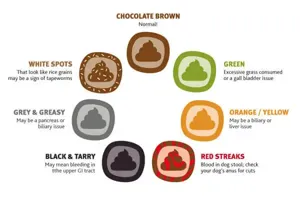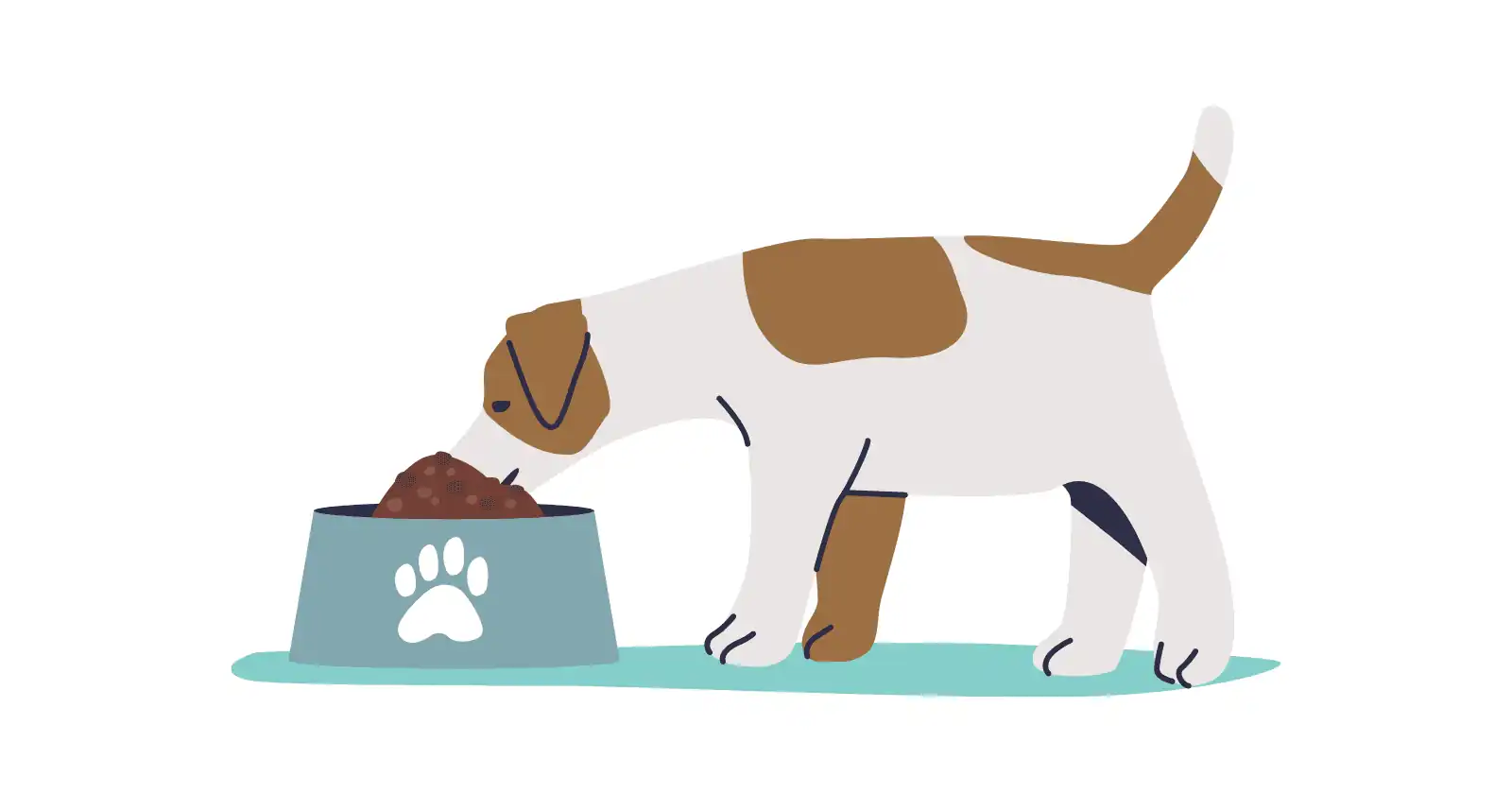Decoding Your Doggie's Poop Color

Let's go on to discuss your dog's feces color, which is an essential component of their wellness. Keeping an eye on the color of your dog's stool will help you spot any underlying medical disorders or prospective digestive problems.
Here are some typical poop colors and what they mean:

- Green Poop: Consuming grass or other green-colored items might cause dogs to produce green poop. It usually isn't harmful to happen. A prolonged digestive problem, such as malabsorption or gastrointestinal infections, could be indicated by persistently green feces.
- Yellow poop: Dog excrement that is yellow in color may indicate digestive disorders, such as liver issues or malabsorption of fats. It may also be a symptom of gallbladder or pancreatic issues.
- Black Stool: Blood that has been digested and is present in the feces may be the result of bleeding in the upper digestive system. This might be the result of tumors, ulcers, or blood intake from many sources. Veterinarian care must be sought immediately for black stools.
- Bloody or Red Stool: Bleeding in the lower gastrointestinal tract, specifically the colon or rectum, can cause red or bloody stool. Hemorrhoids, colitis, rectal polyps, or even some types of cancer can be the cause.
What Poop Color Indicates a Healthy Dog:
A healthy dog should typically have a well-formed, brown stool. Its texture should be solid and neither too stiff nor too soft. Depending on the dog's diet, the size and consistency may vary, but it should be simple to pick up and not sticky.
Some health conditions that can affect change in your dog's Poop color as discussed above:
- Gastrointestinal Bleeding
- Pancreatic Issues
- Liver Disease
- Parasites and Infections
- Inflammatory Bowel Disease (IBD)
Home remedies and preventative measures:
- High-Quality Food & Balanced Diet: Feed your dog a balanced homemade diet recommended by a veterinarian or good quality dog food. Make sure it has all the nutrients you need and is free of any chemicals or artificial colors that can change the color of your stool. You could also try Kuddle’s dog food planner, to get a personalized diet plan for your doggos!
- Regular Exercise: Regular exercise keeps the digestive system in good shape and regulates bowel movements.
- Fiber-Rich Foods: Including fiber-rich foods like pumpkin or sweet potatoes in your dog's diet might help control bowel movements if they occasionally have constipation or diarrhea.
- Probiotics: Inquire with a vet if your dog's diet should include probiotics. Probiotics can help maintain a balanced gut microbiota, which will improve digestion and lower the risk of digestive problems.
When to consult a vet:
- Sudden or Serious Changes: It is best to consult a veterinarian for an accurate diagnosis and treatment if the poop color change is sudden, serious, or followed by other worrying symptoms.
- Consistent Diarrhoea or Constipation: If your dog consistently has diarrhea or constipation, it may indicate a more serious condition that requires veterinary care.
- Blood in Stool: If you see any new blood or blood that has turned tarry or black in your dog's stool, this may be a sign of gastrointestinal bleeding that needs to be treated by a vet right away.
- Lethargy and Loss of Appetite: It's important to seek veterinarian assistance right away if your dog's poop color changes along with symptoms like drowsiness, loss of appetite, vomiting, or pain in the abdomen.
In conclusion, Understanding your dog's state of wellness can be facilitated by analyzing the color of their feces. You can spot possible problems and get quick veterinarian care by paying attention to these minor clues. Keep in mind that normal stool should be brown in color.


